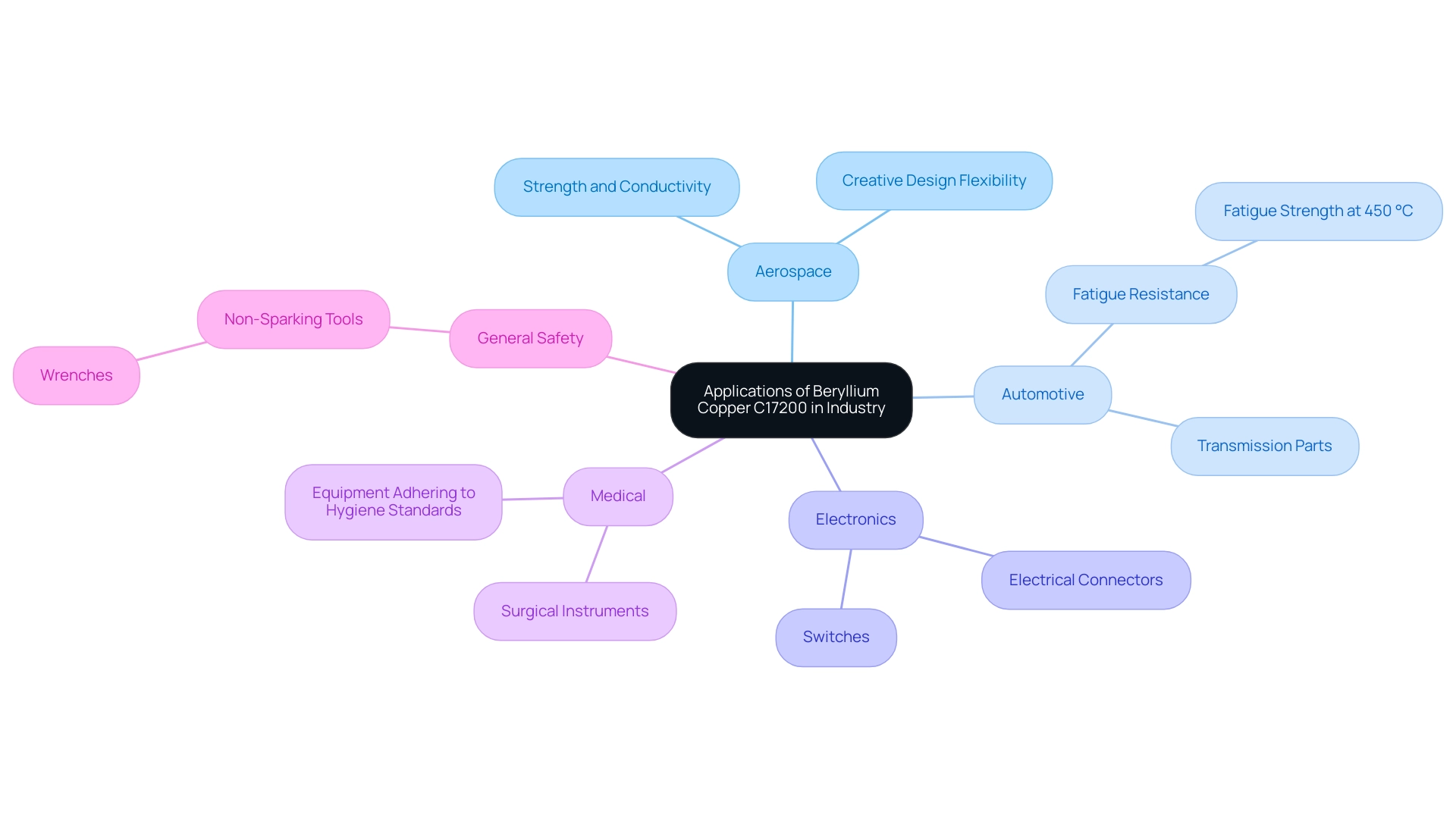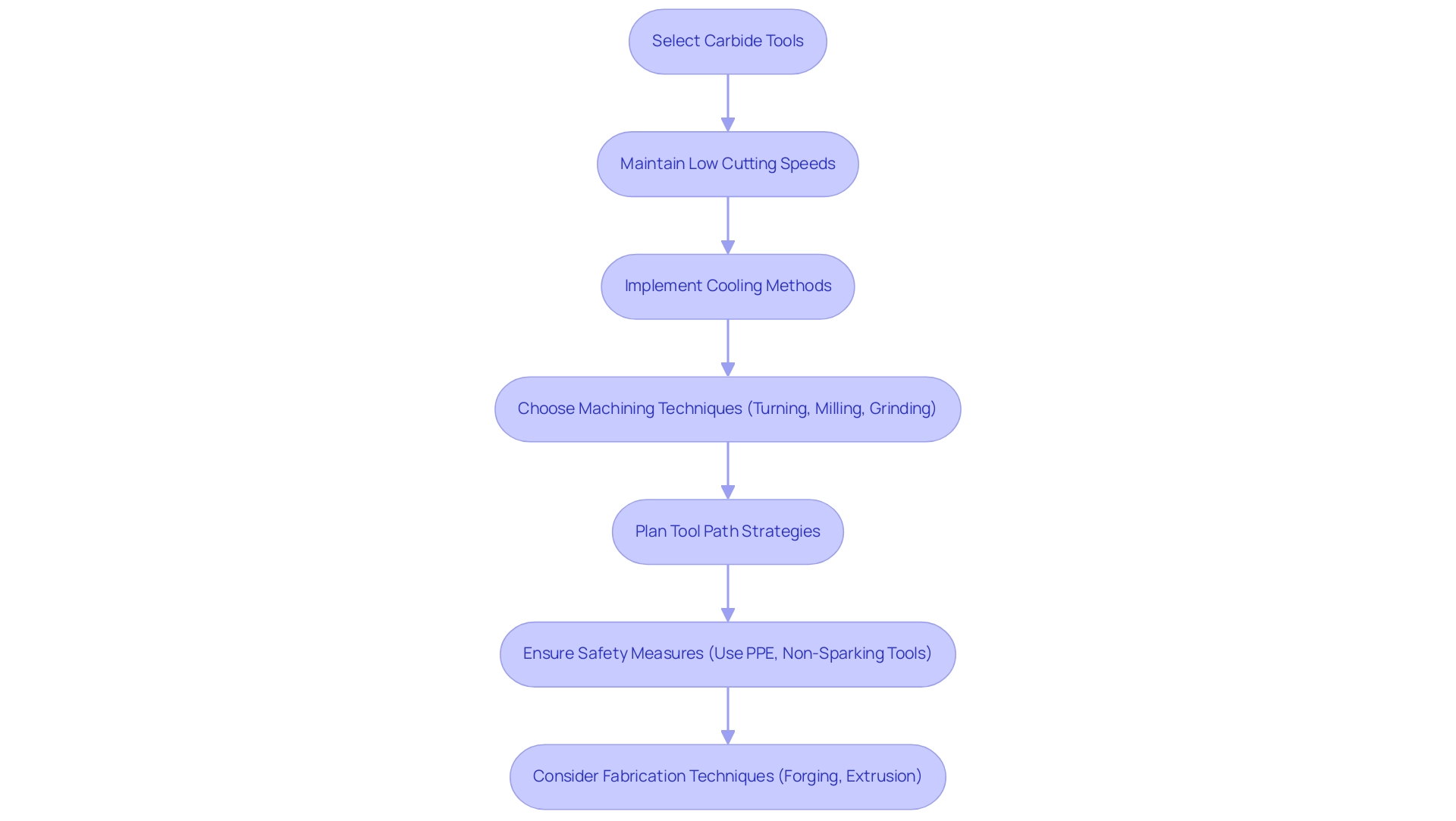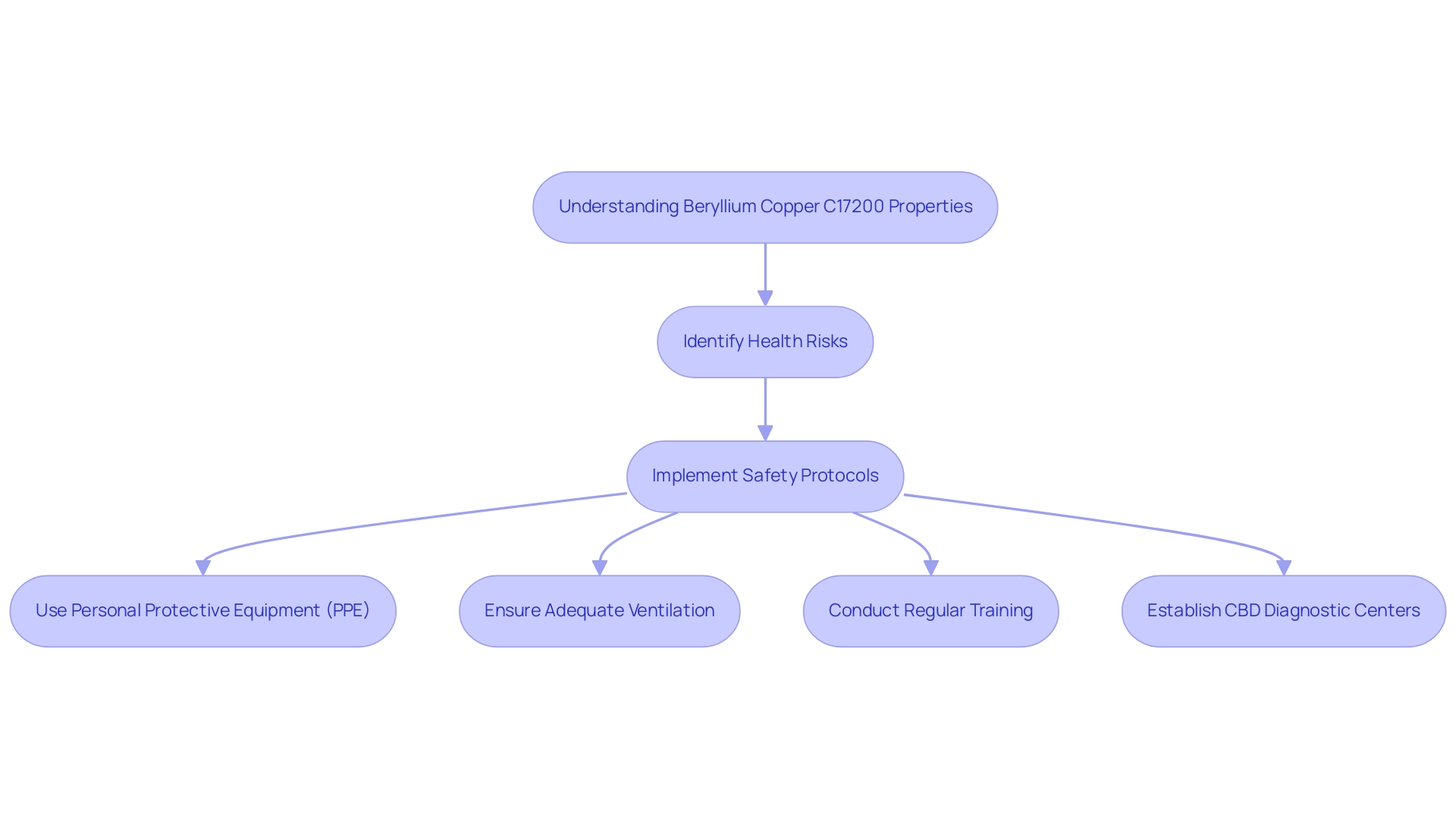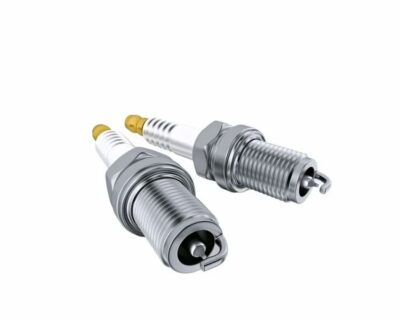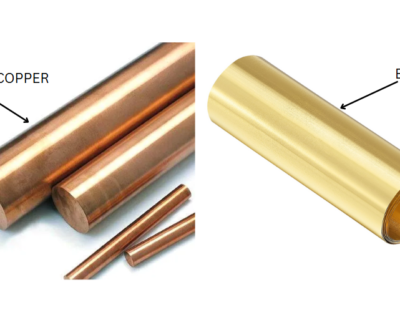Blogs
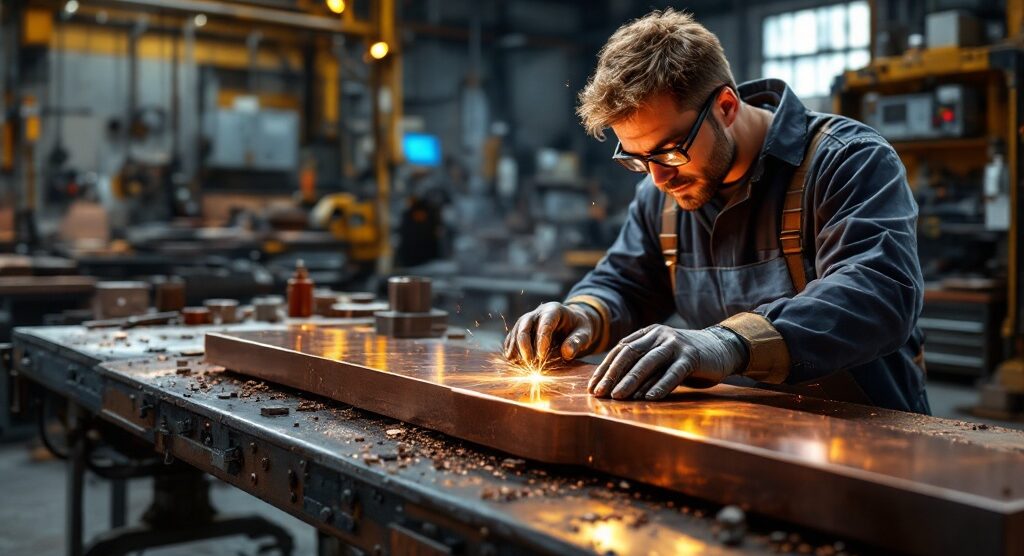
Understanding Beryllium Copper C17200: An In-Depth Tutorial on Properties and Uses
Introduction
Beryllium Copper C17200 stands at the forefront of high-performance materials, merging exceptional strength with remarkable electrical conductivity to meet the demanding standards of various industries. This alloy, primarily composed of copper and beryllium, is not only celebrated for its mechanical properties but also for its versatility across critical applications, from aerospace components to non-sparking tools in hazardous environments.
As procurement managers navigate the complexities of sourcing materials, understanding the unique characteristics and applications of C17200 becomes essential. This article delves into the alloy’s composition, key physical properties, machining techniques, and vital safety considerations, equipping professionals with the insights needed to make informed decisions in their procurement strategies.
Overview of Beryllium Copper C17200: Composition and Classification
DOMADIA Beryllium Copper is acknowledged as a high-performance copper material, particularly valued for its outstanding strength and electrical conductivity. This mixture, compliant with international standards such as UNS and ASTM, is primarily composed of approximately 97.5% copper and about 1.9% beryllium, classifying it as a precipitation-hardening material. Such a distinctive composition endows beryllium copper C17200 with remarkable mechanical properties, making beryllium copper C17200 ideal for applications that demand high strength and wear resistance.
Notably, this metal finds extensive use in critical components such as:
- Electrical connectors
- Precision instruments
- Springs
- High-performance tools
- Aerospace components
Its performance is further underscored by its typical tensile strength, which can reach up to 745 MPa, as indicated by the Rod TD04 TYPE: 745 statistic. Additionally, beryllium copper C17200 materials are utilized in welding electrodes and corrosion-resistant components, demonstrating their versatility and broad product range.
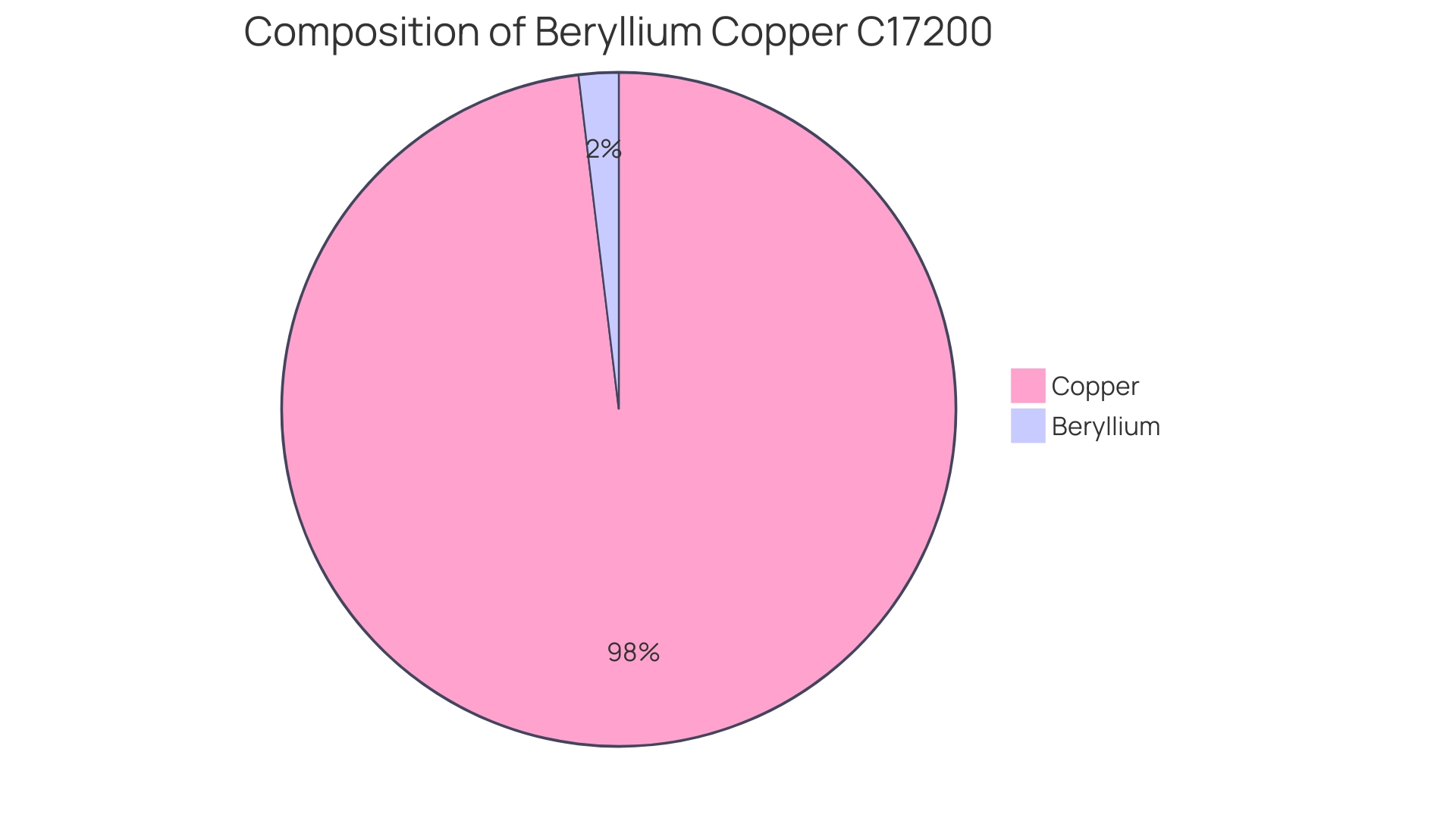
Key Physical and Mechanical Properties of C17200 Beryllium Copper
Beryllium copper C17200, which is provided and produced by Domadia, is renowned for its exceptional physical and mechanical properties, making it a top choice in various demanding applications, including tools and components in safety-critical industries. This combination boasts an impressive yield strength of 1,400 MPa and an ultimate tensile strength of 1,550 MPa, indicating its robust performance under stress. In addition to its strength, this alloy exhibits a thermal conductivity of 120 W/m·K and an electrical conductivity of 18% IACS, establishing it as one of the most conductive copper alloys available.
The material also demonstrates excellent fatigue resistance, achieving a hardness rating of up to 45 HRC, coupled with commendable corrosion resistance. These characteristics collectively make beryllium copper C17200 highly desirable for applications that require both durability and reliability, particularly in safety-critical sectors where structural integrity is essential. Notably, Beryllium Copper Plates are essential in the production of non-sparking tools, which are crucial for safety in explosive environments.
Insights from recent studies, such as the case study by Prof. Bo Chen on additive manufacturing and structural integrity, suggest that the characteristics of this material could significantly enhance the safety and reliability of structures in critical applications. Furthermore, Tim Bradow from Rigaku indicates, ‘CT instruments can alter battery analysis workflows,’ emphasizing the material’s significance in the electric vehicle sector, particularly as the necessity of Non-Sparking Tools in explosive environments keeps increasing. Domadia’s dedication to high-quality alloy solutions through innovative manufacturing and strict quality control, combined with our emphasis on customer satisfaction and customized solutions, establishes us as a leader in this field, guaranteeing that procurement managers obtain the finest materials for their requirements.
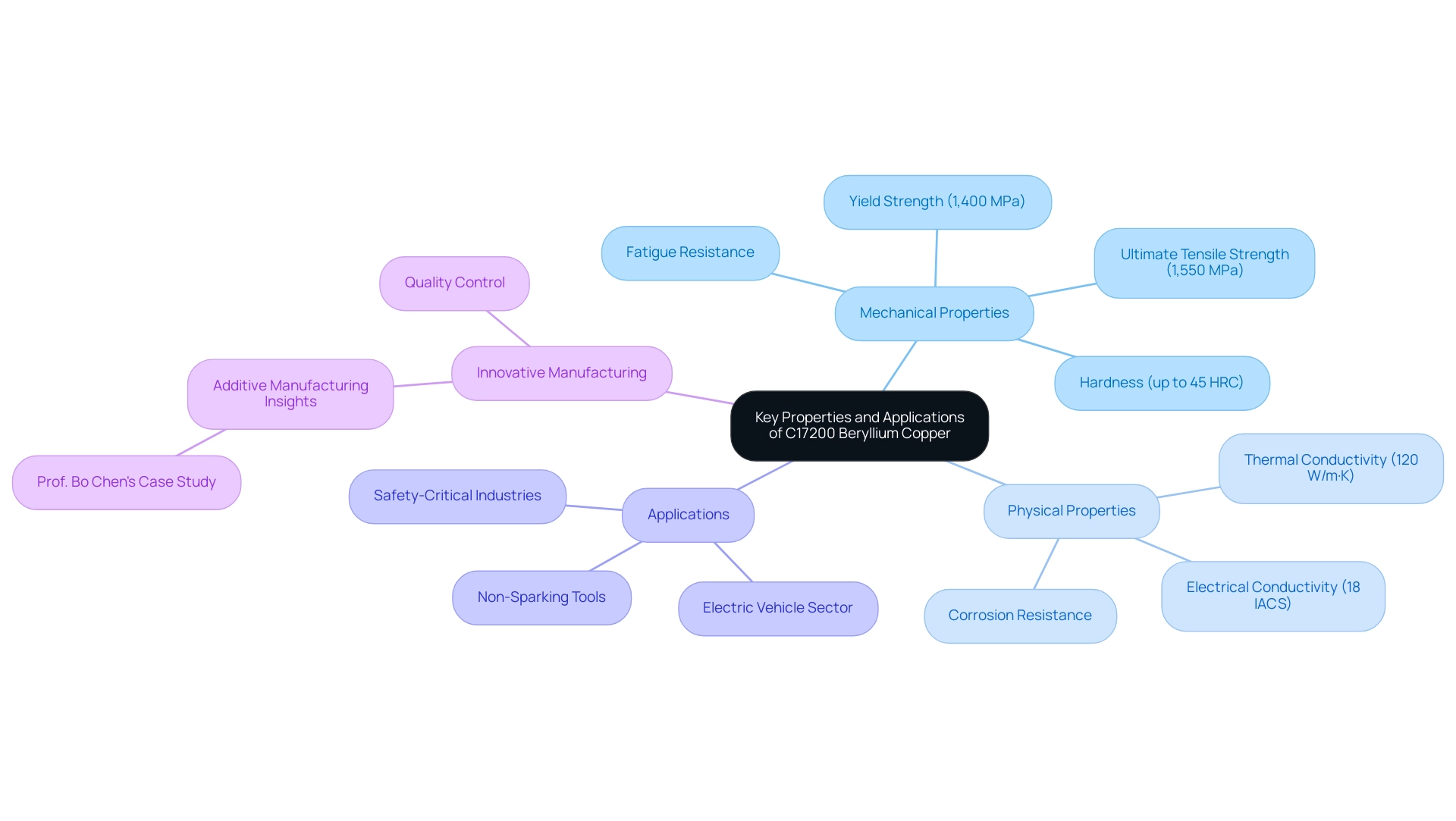
Applications of Beryllium Copper C17200 in Industry
The metal mixture is highly esteemed in essential sectors, such as aerospace, automotive, and electronics, especially appreciated for its non-sparking characteristics that improve safety in dangerous environments. The unique chemical composition of beryllium copper c17200, with approximately 1.8% beryllium, contributes to exceptional mechanical strength and electrical conductivity, making it suitable for manufacturing essential components such as:
- Electrical connectors
- Precision instruments
- High-performance springs
In the automotive sector, this alloy is utilized in parts requiring exceptional fatigue resistance—an essential feature given that its fatigue strength at 450 °C decreases by 38.4% compared to 25 °C, which is crucial for maintaining reliability in high-stress applications.
The aerospace industry favors this material for its excellent mechanical properties, ideal for applications requiring both strength and conductivity. Industry experts emphasize the flexibility of this alloy, enabling creative designs in aerospace parts that must adhere to strict performance criteria. Moreover, recent applications demonstrate the significance of beryllium copper c17200 in the electronics sector, where it serves as a fundamental material for connectors and switches due to its outstanding electrical conductivity.
In addition to these applications, this alloy’s non-sparking properties make it an excellent choice for tools like wrenches, ensuring safety in environments where flammable gases or liquids are present. This versatility extends to the medical field, where it is used in surgical instruments and equipment, adhering to stringent hygiene standards. Real-world instances of this alloy’s applications, such as in transmission parts and connectors within automotive components, highlight its reliability and essential role across multiple sectors.
For procurement managers, it is crucial to note that pricing and inventory details for this metal product can vary based on supplier and market conditions. Customer inquiry support is available to assist with specific needs and questions regarding product availability. Additionally, for a more comprehensive view of available materials, options like Kovar and Mu-Metal may also be considered, as they offer unique properties suitable for various applications.
Machining and Fabrication Techniques for C17200 Beryllium Copper
Machining this specific alloy presents distinct challenges because of the material’s significant hardness, requiring specialized tools and methods to guarantee optimal performance. At Domadia, we acknowledge the significance of offering an extensive variety of bimetal solutions, including foils, sheets, rods, and wires, customized to fulfill your particular needs. The use of carbide tools is highly recommended, as they provide the durability required to withstand the material’s toughness.
Additionally, maintaining low cutting speeds is crucial to prevent excessive heat generation, which can lead to tool wear and compromised workpiece integrity. Adequate cooling methods, such as flood cooling or mist cooling, should be employed to mitigate overheating during operations.
Common machining techniques for beryllium copper C17200 include turning, milling, and grinding, with each technique requiring careful consideration to achieve precision and quality. For example, turning operations must be carried out with consideration to tool path strategies that reduce thrust forces, which are recognized to be roughly one order greater for certain materials compared to standard metal mixtures. This significant difference emphasizes the need for careful planning in machining processes to avoid complications.
Moreover, safety is paramount when working with this material. Implementing robust safety measures such as the use of appropriate personal protective equipment (PPE) is essential to mitigate exposure to potentially hazardous beryllium dust during machining processes. Non-Sparking Tools are the best alternative for non-sparking application purposes in explosive potential environments, ensuring safety in operations.
In terms of fabrication, techniques such as forging and extrusion are frequently utilized to effectively shape beryllium copper C17200, allowing for versatility in manufacturing applications. As highlighted by industry expert Prof. Bo Chen, “Learn how additive manufacturing is revolutionizing structural integrity in safety-critical industries,” it is crucial for procurement managers to stay abreast of the latest advancements in fabrication techniques. This knowledge will empower them to make informed decisions regarding the procurement and utilization of this valuable alloy, especially considering its mechanical properties—such as a tensile strength ranging from 1280 to 1480 MPa and elongation at break of 15.0 to 30.0%—which are essential for evaluating its performance in various applications.
Furthermore, for thorough planning, procurement managers ought to refer to the user manual for best practices and procedural guidance on effectively using beryllium copper solutions. Pricing and inventory details for the alloy strips are also available upon request, ensuring that you have all necessary information for project success.
Safety and Toxicity Considerations of Beryllium Copper C17200
C17200 is renowned for its outstanding mechanical properties, making it a preferred choice in various applications, particularly where non-sparking tools, such as C17200 Non-Sparking Wrenches, are essential. However, it is crucial to acknowledge the significant health risks associated with improper handling of this material. Exposure to beryllium dust can lead to chronic beryllium disease, necessitating strict adherence to safety protocols in the workplace.
For instance, studies reveal that the standardized mortality ratios (SMR) for soluble/mixed beryllium and insoluble beryllium are 0.88 and 0.76, respectively, reflecting the serious health implications of exposure. Consequently, implementing robust handling protocols is imperative, including:
- The mandatory use of personal protective equipment (PPE)
- Ensuring adequate ventilation
- Conducting regular training to raise employee awareness about the risks linked to beryllium exposure
Moreover, the establishment of CBD Diagnostic Centers, which offer on-site pulmonary specialists and clinical evaluation facilities, highlights the critical importance of medical monitoring in preventing chronic beryllium disease. Compliance with safety regulations set by OSHA and the EPA is not just a regulatory obligation but a vital aspect of safeguarding employee health and minimizing risks associated with this alloy.
As noted by Paolo Boffetta from the Icahn School of Medicine, understanding the mortality rates among beryllium-exposed workers based on beryllium solubility underscores the necessity of adhering to safety protocols. Furthermore, the immune response to beryllium exposure can be significantly influenced by the frequency of beryllium-specific central memory CD4+ T cells, illustrating the biological implications of safe handling practices. Therefore, procurement managers must prioritize these safety features and the advantages of using non-sparking tools, including Beryllium Copper, Kovar, Mu-Metal, and Nickel materials, in environments with explosive potential to ensure a safe working environment.
Conclusion
Beryllium Copper C17200 represents a pinnacle of performance in high-demand applications, merging exceptional mechanical properties with crucial safety features. Its unique composition, primarily consisting of copper and beryllium, equips it with remarkable strength and electrical conductivity, making it indispensable across various industries such as aerospace, automotive, and electronics. The alloy’s capability to withstand extreme conditions while maintaining reliability positions it as a preferred choice for critical components, including electrical connectors and non-sparking tools.
Understanding the machining and fabrication techniques specific to C17200 is essential for optimizing its use. The challenges posed by its hardness necessitate specialized tools and methods to ensure precision and quality. Moreover, the importance of safety measures cannot be overstated, given the health risks associated with improper handling of beryllium. Adhering to established safety protocols and utilizing appropriate personal protective equipment are paramount in mitigating exposure risks.
As procurement managers navigate the complexities of sourcing materials, the insights provided on Beryllium Copper C17200 highlight not only its versatility and performance but also the critical importance of safety considerations. By prioritizing informed decision-making and embracing best practices in handling and machining, organizations can fully leverage the advantages of this exceptional alloy, ensuring both operational success and employee safety in demanding environments.

